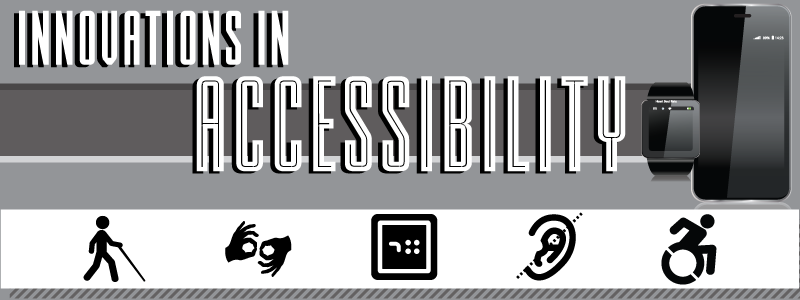The number of smartphones and connected devices in our country outnumbers the entire American population. Since first hitting our screens, apps have revolutionized how we use our phones, do our jobs, and interact amongst and with people around the globe. The average American uses apps for everything from trading stocks to tracking steps to teaching students. And for the nearly one in five Americans living with a disability, apps have provided an avenue to improve and enhance their capabilities.
Innovations like text-to-speech apps, customized computer interfaces, and internet of things-connected prosthetics and wearable devices have played a huge role in making the benefits of tech more accessible to all.
We encourage you to read about a few of our members leading the charge in accessible tech, and vote for our 2018 SXSW panel on innovations in accessibility.
- BridgingApps
BridgingApps, a program within the non-profit disabled services provider Easter Seals Greater Houston, strives to bridge the gap between technology and people with disabilities. Founded by parents and therapists, BridgingApps provides a comprehensive database for people with disabilities and their caregivers to access educational and therapeutic apps and tools anywhere, anytime. This equips parents, teachers, and therapists with trusted resources and best practices to help them effectively utilize mobile devices and apps to improve individual skill development and help people with disabilities reach their highest levels of physical and cognitive development. You can learn more here.
- Software Smoothie
Birmingham-based developer Software Smoothie builds apps for users of a variety of ages and abilities, and their services have been particularly meaningful for people with autism. The company’s PhotoButtons app was created to help toddlers visually identify words and people but has also gained great success in teaching vocabulary to young students with autism. Bridging Apps praised the app, noting “we have used this app with several kids on the autism spectrum from ages 3-9. We have also used it with an 8-year old with Down Syndrome and a 6-year old with apraxia. They all interacted with the app and loved it.” Though the app was originally developed as an educational game for children, its accessible nature allowed it to reap greater benefits for children and adults with different learning abilities.
- Communication Circles
Communication Circles in Houston, Texas, specializes in high-tech augmentative communication, user accessibility, user experience, and speech therapy services. In addition to providing therapy services to people with disabilities, this tech consulting company helps app developers and innovators make their products and services more accessible to users of different abilities. In addition, Communication Circles provides easy, web-based courses to help parents and therapists use tech platforms that promote augmentative and alternative communication (AAC), which are communication methods used to supplement speech or writing for people with impaired production or comprehension of language.
- Apple Inc.
In addition to innovations developed by small app developers and tech companies like the ones listed above, larger tech firms like Apple are committed to developing technologies, devices, and platforms that people of all abilities can use. In addition to supporting users with cognitive disabilities, Apple has embedded algorithms into their smartphones and devices to enable wheelchair users, people who are deaf or blind, and other people with disabilities to use tech to enrich their lives. You can learn more about their innovations in accessible tech here.
The true benefits of technology can only be realized when they are accessible to users of all abilities. We hope to raise the profile of tech accessibility during a 2018 SXSW panel entitled “Y35 W3 C4N: Innovations in Accessibility,” which will feature Communication Circles CEO Betsy Furler and insights on Apple’s global accessibility policy.
We encourage you to vote and share this panel to help our members continue the mission to make tech accessible for all.
